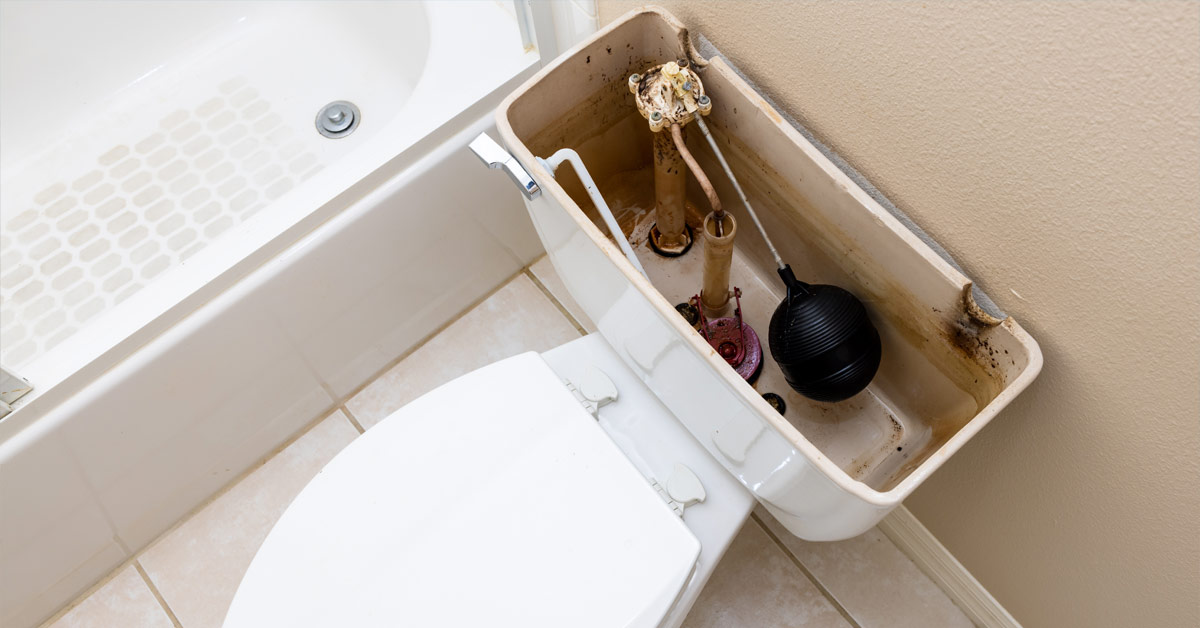
The toilet. It’s one of the hardest-working plumbing fixtures. It also has the most moving parts.
Both contribute to performance issues over time.
Toilets don’t last forever. Sometimes they crack or break. Parts wear out. They can clog, run water constantly, leak, have issues with filling, flushing, and maintaining a consistent water level, and sometimes they get calcium buildup and need to be replaced.
How do you know when it’s time to replace a toilet? If the toilet moves or wobbles when you sit down, it’s time. Other signs include the age of the toilet, if the bowl or back cracks, if it uses an excessive amount of water causing your water bill to rise, or if it doesn’t flush properly because of an obstruction.
In addition, if you live in an area with hard water, calcium, and minerals can build up and affect movable parts. Staining increases too.
Perhaps none of the above is applicable at the moment. Maybe you need a new toilet because of life changes. You’re older or someone else in your household is and mobility is not as good as it used to be. Has your lifestyle changed because of an accident or changes in health?
Bathroom designs and fixtures have expanded to include accessible options. More space may be needed to accommodate mobility devices such as walkers and wheelchairs.
Toilets can vary in height to make it easier for people who have difficulty getting out of a low seat. A lower-height toilet might be better for children and some wheelchair users who can transfer independently. Higher toilets, 16-19 inches above the floor, are better for taller people and are easier for people who have difficulty getting out of a low seat.
The Canada Mortgage and Housing Corporation’s Accessible Housing publication suggests the height of the toilet and wheelchair should be the same for the person using both and transferring from one to the other.
Make it easier to reach for controls such as flushing and access to toilet paper and grab bars. In addition, adding a bidet function and heated seat can help with health issues and add a little more comfort.
When it comes to choosing a new toilet, consider the size of the space and the number of people that will be using it. Style, colour, function, and lifestyle also play a role. Location does too – whether you are on a municipal water system or live in a rural setting where your water source is either groundwater or surface water. Water and wastewater have to be handled differently for each.
Municipalities may draw from either source or use a combination and are responsible for treatment and disposal. Residents are billed for both incoming and outgoing water so installing a fixture such as a low water volume or dual-flush toilet may be of interest to conserve water and money.
Groundwater comes from the ground via several types of wells. The amount of treatment for wells depends on whether it’s a drilled well, dug well, or well point, and looking after it is the responsibility of the owner. Water conservation may be important so that the well has time to replenish and doesn’t run dry.
Surface water is any source of water that is open to the atmosphere – lake, river, stream, spring, or pond – and must be treated for contamination if drinking it. In both cases, water that comes in becomes wastewater going out to a septic system that must be pumped out regularly depending on how many people use it. Water conservation may be important here too otherwise your septic system is filling with water and has to be pumped out more frequently.
Perhaps your home is of the mobile variety where your water source is limited to what you can carry onboard or hook up to. There are many different kinds of environmental-type toilets where a septic system is not an option. Some go into RVs, mobile homes, or fifth-wheel trailers. Most have foot pedals to release waste into a holding tank which can then be emptied into a outside septic system such as a sani dump. Locations range from private to public, RV park, non-park, municipal, truck stop, rest stop, campground, and more throughout Ontario.


